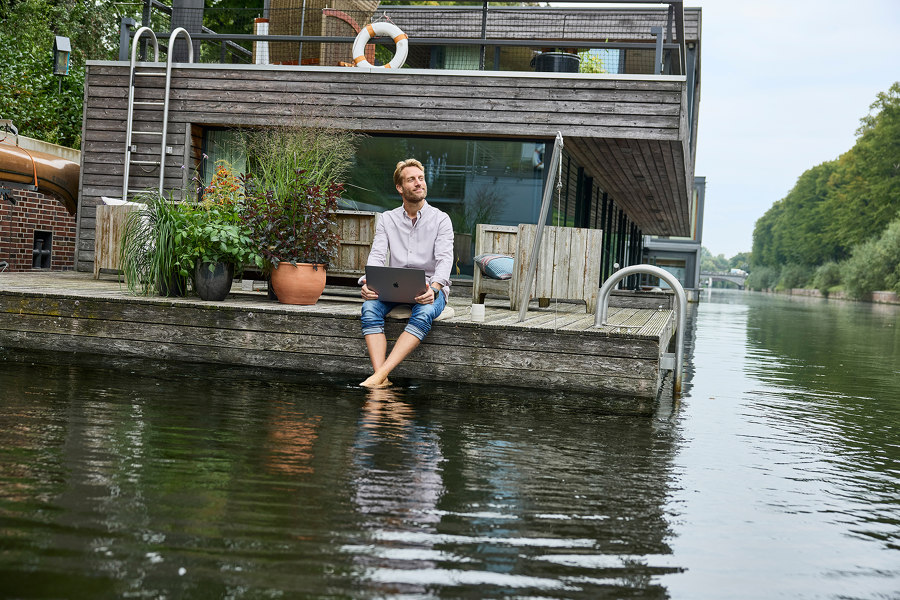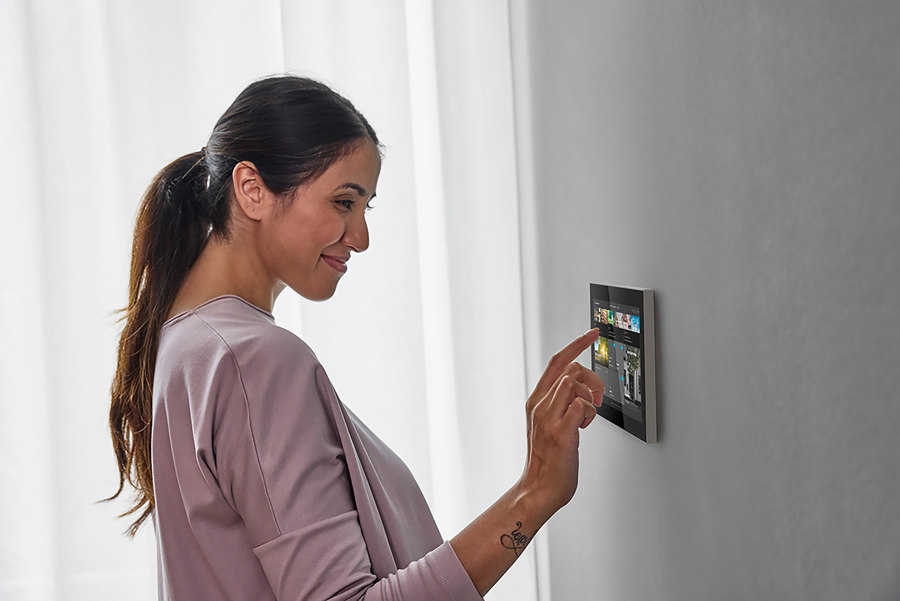Climate consciousness of the future: the Busch-Jaeger Intelligence Series
Brand story by Markus Hieke
Lüdenscheid, Germany
22.03.23
In the second instalment of the Busch-Jaeger Intelligence Series – three consecutive features sponsored by the specialist for electrical installation technology and building automation – the Executive Director of Germany's Sustainable Building Council elaborates on progress in the realm of climate-conscious architecture and explains the role technology can play in helping achieve our common future goals.
A safe, smart and sustainable future of electrification is feasible. Smart energy management automates and optimises energy consumption in functional and residential buildings
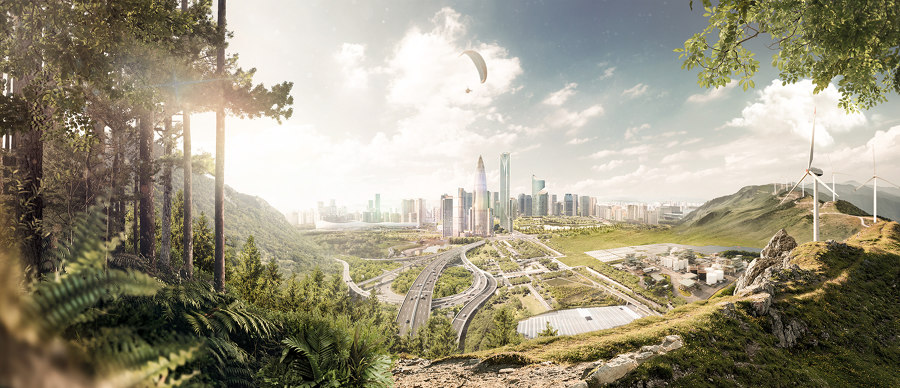
A safe, smart and sustainable future of electrification is feasible. Smart energy management automates and optimises energy consumption in functional and residential buildings
×If we look at global energy consumption, we see that almost a third of it is attributable to buildings, and 40% of global CO2 emissions are due to their use. How can we build in such a way that less energy is needed during construction and later during operation? What contribution do material cycles make? And to what extent can technical solutions such as smart features and integrated energy management, in existing buildings as well as in new construction, help to resolutely meet the climate challenges of our time? That's what we asked the Executive Director of the German Sustainable Building Council (DGNB), Dr. Christine Lemaitre.
Dr. Lemaitre has been Executive Director of the DGNB since February 2010, received several awards for her role in the construction industry and contributes to the initiative "Building Sense Now" and the Climate Positive Europe Alliance (CPEA) network
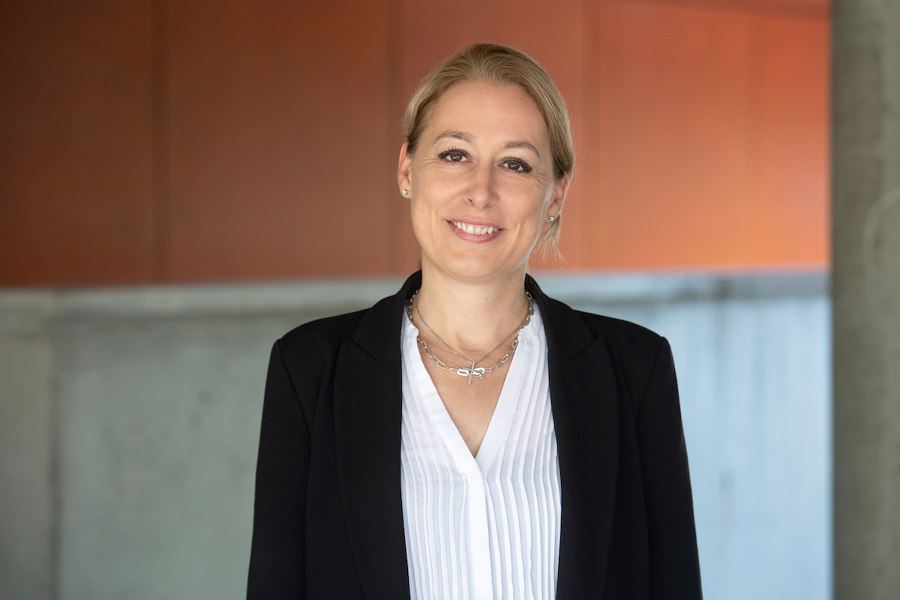
Dr. Lemaitre has been Executive Director of the DGNB since February 2010, received several awards for her role in the construction industry and contributes to the initiative "Building Sense Now" and the Climate Positive Europe Alliance (CPEA) network
×Dr. Lemaitre, as Executive Director of the DGNB, you are particularly close to the topic of sustainability in architecture and in the construction industry in general. What development in recent years can be highlighted in particular?
I think sensitivity to the issue has increased greatly in recent years - probably not only, but also thanks to Fridays for Future. When we started with the DGNB 15 years ago, sustainability was still rather a niche topic and you had to argue a lot why this aspect is so important in construction. In the meantime, we are no longer asked the question of why, but of how. The topic of materiality has also moved very strongly into focus, the emissions that we have on the one hand in the manufacture of building products, but also the topic of supply chains and the scarcity of resources. A basic understanding has definitely developed in the industry.
The Busch-Jaeger site in Lüdenscheid became the world's first virtually climate-neutral and cost-optimised production site of the ABB Group in 2019
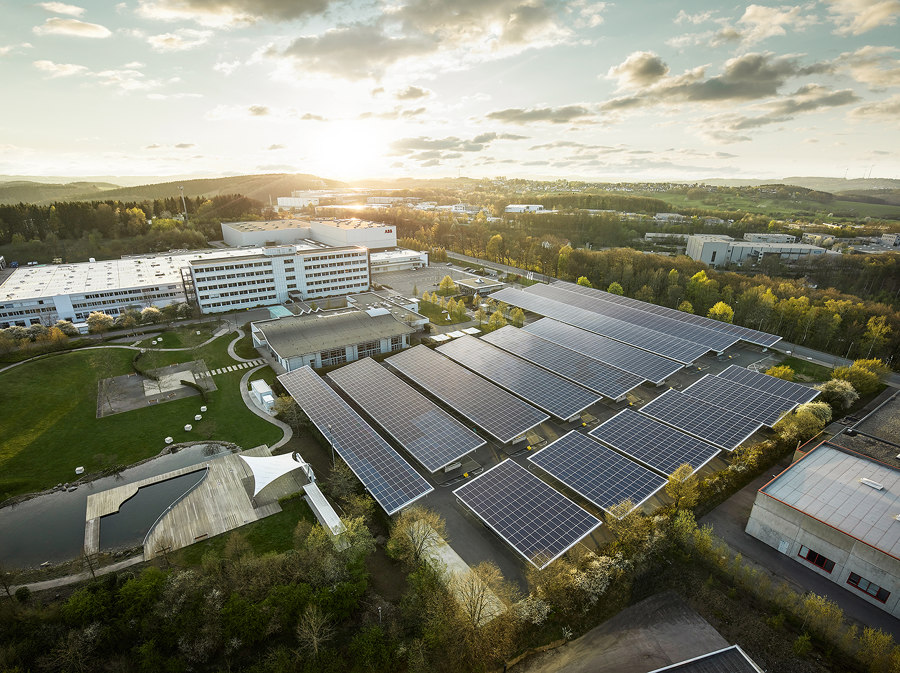
The Busch-Jaeger site in Lüdenscheid became the world's first virtually climate-neutral and cost-optimised production site of the ABB Group in 2019
×With your certification system, you are trying to cover all of this. At the same time, this very principle may serve as a bridge to asking questions. If the goal is to have a project certified, do you as DGNB then recommend the possible means?
Exactly, the certificate is basically an optimisation tool, a planning tool with which you have the whole range of issues on your screen and can make the trade-offs systematically. Sustainability, especially in construction, is often a conflict of goals where there is no black or white, but rather questions that need to be weighed up and from which the best solution can be derived: For whom, how much and where do I build?
Sustainability, especially in construction, is often a conflict of goals where there is no black or white, but rather questions that need to be weighed up and from which the best solution can be derived
Ultimately, it is also an instrument for quality assurance. After all, in addition to the aforementioned sensitization, we are dealing here with an industry that is not actually used to taking a critical look back at what it has implemented. Moreover, it is an industry that is very small-scale, in which planning teams are constantly reassembling and always facing new challenges. The certification system is a means of also looking at where one actually stands, measured on the basis of data.
And it’s not just about new construction – you're also certifying existing buildings.
That's right, we look at the entire built environment. That means we are very broad in the variety of use profiles, as we call it, that is, the types of buildings that we consider. We distinguish between new construction certificates, which are issued from the day of construction completion, and certificates that evaluate and support optimisation during ongoing operation. But we also have a deconstruction certificate in the initial application – keyword: circular economy. Meanwhile, we also offer a system for existing buildings that are being refurbished. In this way, we address the issues very precisely and provide the right instrument in each case.
In 2019, Busch-Jaeger was the first company worldwide to receive a Cradle to Cradle certificate for their future® linear light switch range — attesting safe materials, continuous recycling of materials, clean water, renewable energy and social justice
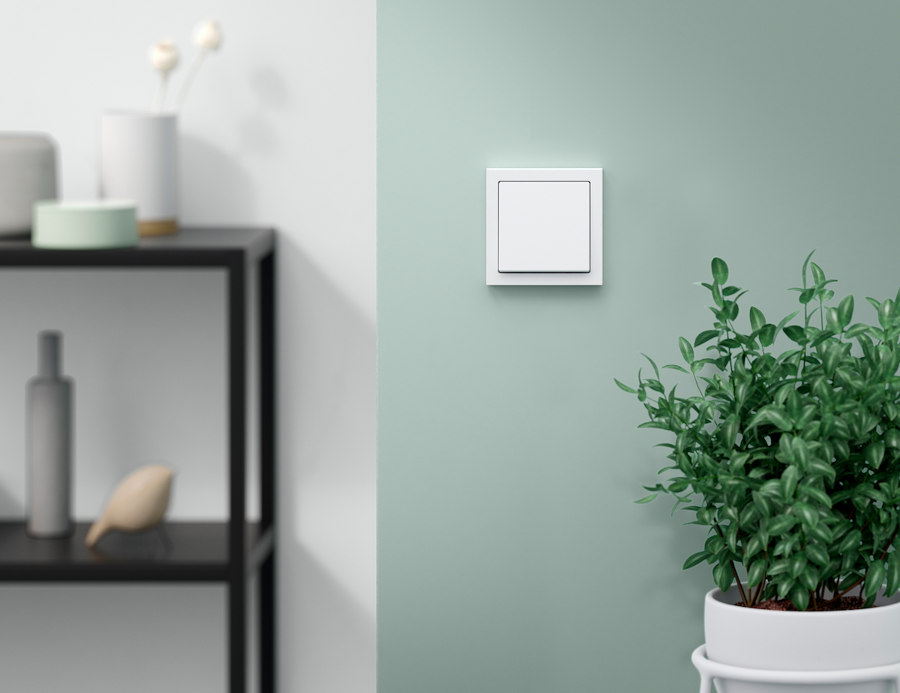
In 2019, Busch-Jaeger was the first company worldwide to receive a Cradle to Cradle certificate for their future® linear light switch range — attesting safe materials, continuous recycling of materials, clean water, renewable energy and social justice
×The choice of appropriate materials is a big part of climate-neutral building. What other measures can architects and designers take into account in order to plan in a more climate-friendly way?
What architects have to ask themselves and their clients again and again is whether new construction is necessary at all. Actually, we have to get out of the sufficiency mindset and critically question whether we need it all. How much space do we honestly need? Then it's a matter of working sensibly with the surroundings. In other words, with the orientation of the building. Do we really need such large window areas or can they be minimised to reduce solar heat gain? Perhaps it is also possible to create natural shading situations through buildings or trees to prevent overheating in summer.
We should use more CO2-reduced materials or also examine the use of renewable raw materials. And always ask: Can it be simpler, can it be more robust, to make it last a long time?
Only then comes the issue of material selection, which should logically follow from the building task. We should use more CO2-reduced materials or also examine the use of renewable raw materials. And always ask: Can it be simpler, can it be more robust, to make it last a long time? What will the building look like in 100 years? Can it be repurposed, is it flexible in terms of room design?
Various smart home solutions can be set and controlled via touch panels like the SmartTouch. With an automated electrical installation, all applications can be controlled easily and individually
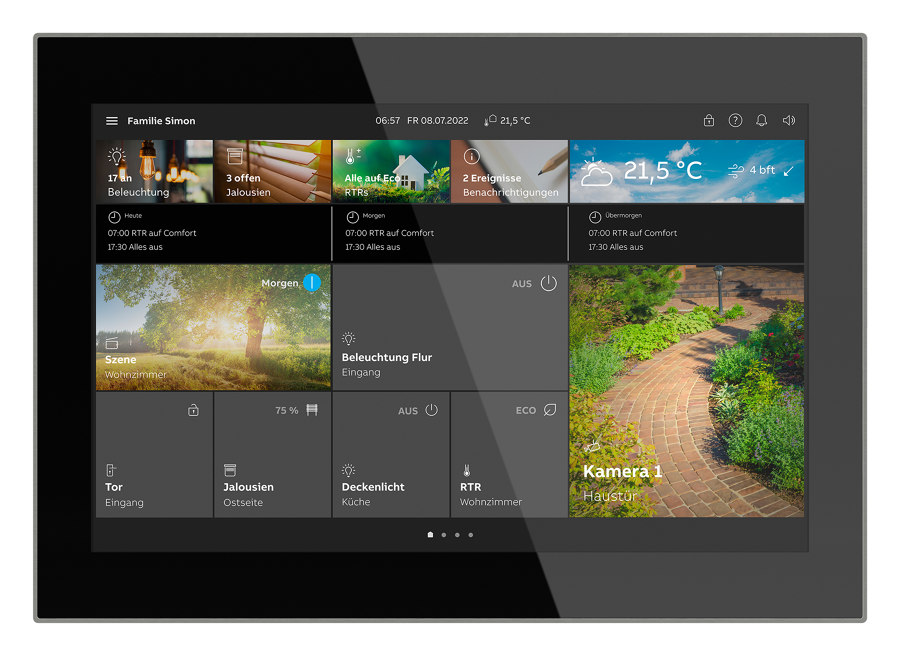
Various smart home solutions can be set and controlled via touch panels like the SmartTouch. With an automated electrical installation, all applications can be controlled easily and individually
×What role does technology play, for example in the form of smart homes and better energy networking?
We have to evaluate technology as a building block in context. We definitely have a gain via technical solutions on the topic of monitoring, on the question of how much energy consumption you really have. At the same time, we have to remember that technology and longevity don't always go well together. If we want buildings to last for centuries, we have to talk about technical systems that can also be easily removed and converted, that perhaps work wirelessly, in order to be maximally flexible.
If we want buildings to last for centuries, we have to talk about technical systems that can also be easily removed and converted, that perhaps work wirelessly, in order to be maximally flexible
And of course, appropriateness is not just about what I build and with what, but also about the technology. Because technical components often contain rare earths. This actually results in all the big challenges here that are more likely to take place in the electrical appliance segment – which makes a forward-thinking concept all the more crucial here.
If I give the example of a smart heating control system that requires a manageable outlay in terms of acquisition and technology and is relatively easy to replace, how do you rate that?
If technology is used in such a way that energy is saved overall, that makes sense, of course. For example, if heating is only used when it is really necessary or if energy gains from solar energy can be used efficiently. But in the end, it always depends on the users. Some may have a technical affinity, enjoy it and have confidence in it. But we also have to think about how the integration of users into such systems works. After all, smart installations are of no use if users constantly open their windows, even though this is not advisable for reasons of efficiency. Therefore, I believe that such technical and smart systems work best when they have a supporting and motivating character.
Emission-free mobility is also part of the climate-neutral footprint. This is supported by bicycles or electric cars, charging points for which are now almost synonymous with new buildings and modernisations
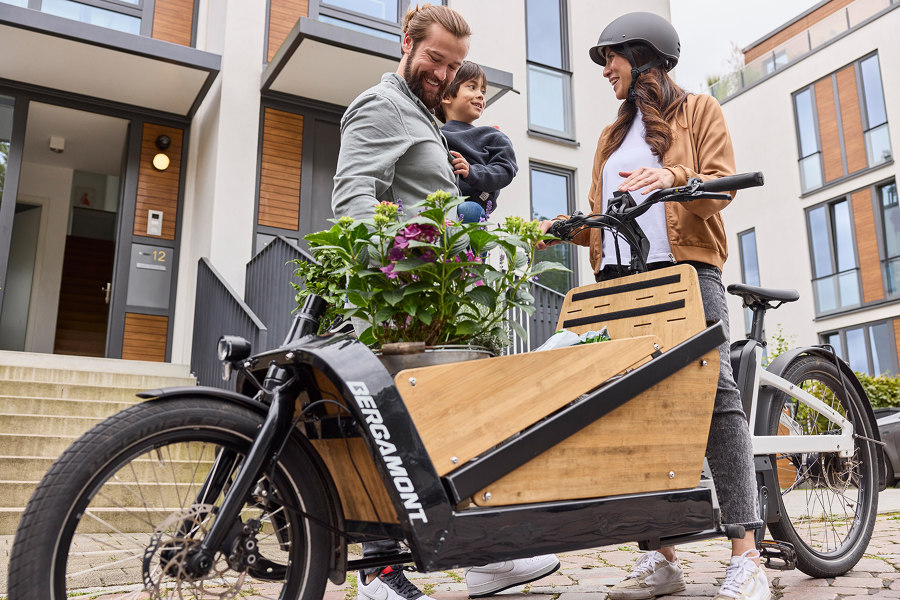
Emission-free mobility is also part of the climate-neutral footprint. This is supported by bicycles or electric cars, charging points for which are now almost synonymous with new buildings and modernisations
×As you have already indicated, circular thinking in architecture and design is a crucial factor and has recently become increasingly pioneering. How does a circular economy characterise itself in concrete execution?
If you start from the goal that we should reduce CO2 emissions as quickly as possible, that we should use resources sparingly, then for everything built today, that means working with components that are reused or made from recycled components. Because that basically has the immediate positive effect that we need quite urgently to limit climate change.
We need to implement circular building consistently in the here and now – with all the challenges it entails
At the same time, we should not repeat the mistakes of the past today and focus already in planning and execution on the fact that everything can be taken apart again later. And we should also be aware that the latter is a very forward-looking strategy that has not made a positive contribution today. Whether it will add value in fifty years, we can only hope. But for that, we need to implement circular building consistently in the here and now – with all the challenges it entails.
With smartification and digitalisation, a booster is set in the area of sustainability. Simple, smart applications such as motion detectors or room temperature controllers can reduce energy consumption by around 6% with every degree saved

With smartification and digitalisation, a booster is set in the area of sustainability. Simple, smart applications such as motion detectors or room temperature controllers can reduce energy consumption by around 6% with every degree saved
×Are there special incentives in Germany for building in a climate-neutral way? How can professionals find out about the topic?
Since April of last year, there has been the QNG system (Quality Seal for Sustainable Buildings) in KfW funding, which has integrated a sustainability bonus and requires sustainability in return. We are already seeing a major effect in terms of very concrete implementation. In order to impart the knowledge that is now much more in demand, we have greatly expanded our training offerings within the framework of our DGNB Academy and are also cooperating with chambers of architects and energy consultants.
Looking beyond Germany's borders, are there similar organisations internationally with which you cooperate or which are oriented to your criteria?
Yes, there are now over 80 Green Building Councils worldwide. As the German Green Building Council, we are also represented in the World Green Building Council and are even the second-largest network here. We have been cooperating with the Austrian and Swiss Green Building Councils since 2009, with the Danish Green Building Council since 2011, with the Spanish Green Building Council for almost three years, and with the Croatian Green Building Council for one year. They have all adapted the DGNB system to their countries. Certification and training are carried out under the DGNB brand. Last year, we founded a non-profit organisation together in Brussels: the Climate Positive Europe Alliance.
© Architonic
Head to the Architonic Magazine for more insights on the latest products, trends and practices in architecture and design.




